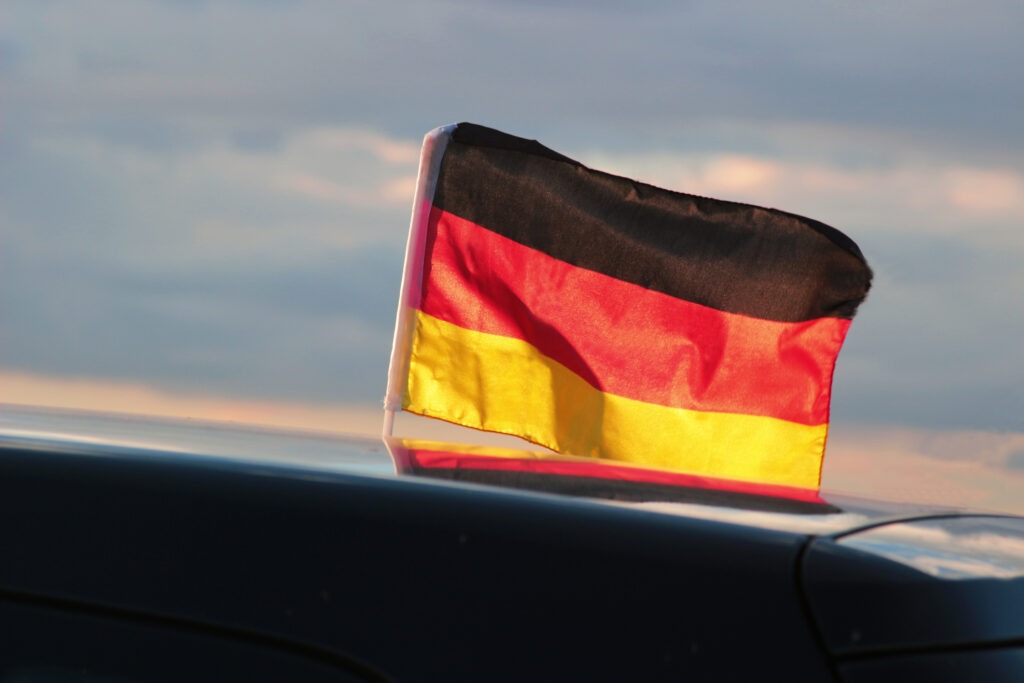Tesla battles VW Group for Germany’s EV market
06 June 2023

Two automotive giants are fighting for dominance over Germany’s electric-vehicle (EV) market. José Pontes, data director at EV-volumes.com surveys the battlefield.
The German automotive market had a positive month overall in April (up 13% year on year), and battery-electric vehicles (BEVs) were a particular highlight (up 34%). There were 29,740 all-electric registrations in the month, accounting for 15% of the overall new-car market.
This performance pulled the market up, unlike plug-in hybrids (PHEVs) which were down 46% year on year. These models are now suffering from the end of federal incentives. In April, PHEVs secured 11,787 registrations or 5.8% of the total market.
In effect, BEVs are becoming the bread and butter of the EV market, something that was unthinkable not long ago. In April, the total plug-in market share grew to 21%, while in the first four months of 2023, this figure hit 20%. BEVs themselves held a 14% market share in this period, highlighting their place as the leading EV technology. Overall, by the end of the year, a 30% EV market share is possible.
All hands on deck
Tesla went into cool-down mode in April, with the Model Y taking a breath from its supercharged first quarter results, recording 1,636 registrations and ending the month in third. It was only behind Volkswagen’s (VW’s) dynamic duo, the VW ID.4 (first) and VW ID.3 (second).
Highlighting the carmaker’s current all-hands-on-deck attitude in Germany, VW Group placed two additional models in the top five. The Skoda Enyaq came in fourth with 1,405 units, the car’s best result in over two years, then the Audi Q4 e-Tron landed in fifth place.
Uncoincidentally, all these models came from the MEB platform, so it seems the electric architecture (once again) produced significant dividends for VW. In further proof that the German carmaker is operating at full speed, the Cupra Born ended April in ninth place, making it five MEB-family models in the top half of the table.
Illustrating current market disruptions, there were only two PHEV models in the top 20 table — all from Mercedes-Benz. The C-Class PHEV showed up in eighth and the GLC PHEV in 16th. Again, not coincidentally, these are two of the best PHEVs present on the European market. They have been able to maintain customer appeal even without incentives.
The second half of the table saw several models shine, including the Mercedes-Benz EQA in 11th and the MG4 showing up in 12th. This is an impressive standing for the Chinese-born BEV (which is growing in popularity and becoming more familiar on the market), proving that SAIC’s market disruptor is here to stay. The sharp, angular EV is the most competitive compact model on the market and a gold standard for present and future EVs in its class.
Two Opel models made it into April’s table. The small Corsa EV showed up in 18th with 598 registrations, while its crossover counterpart, the Mokka EV, ended right behind it in 19th with 585 registrations. Both of these scores were year-best results, perhaps indicating that Opel has finally secured enough batteries to ramp up production.
The VW ID.5 (520 registrations) was not far off the top 20. The BMW i4 was closer still, ending the month in 21st, just nine units behind the Tesla Model 3 in 20th with 574 units. This was only 30 units more than the Polestar 2, putting them in close competition.
Registrations triple
Between January and April, Tesla’s Model Y managed to stay well above its competitors, even doubling the registrations of the runner-up, the VW ID.3. The Tesla crossover has even seen its numbers triple year on year.
This confirms a disruptive performance for a foreign model in Germany — not only in the EV category but also in the mainstream market. Still, this impressive performance from the Model Y is only part of the current electric-market story in Germany.
Many of the crossover’s registrations were made by cannibalising its Model 3 sibling, which now sits in fifth after recording 4,776 registrations between January and April, or about half of what it had a year ago.
Also, VW Group played to its strengths, placing three models (the VW ID.3, VW ID.4, and Audi Q4 e-Tron) in the top four positions, all of them experiencing surging figures. The MEB-based models doubled their registrations year on year. So, while Tesla is making the best use of its star player, the German OEM is profiting from a long (and strong) line-up of team players.
Mercedes-Benz also placed three models in the top 20 (or four counting the Smart Fortwo EV), however, the other German brands saw far more modest results. Opel is still missing out, while BMW had just one representative, the compact iX1, in 18th. This is far from BMW’s best performances in its home market (the i3 was Germany’s best-selling EV in 2014 and 2016), but even a top-ten position would be a great feat for the iX1.
Cementing a powertrain trend, between January and April last year, there were six PHEVs in the top 20 table, but now the tally has fallen to just two.
Market begins to concentrate
In April’s brand ranking, surprise leader Tesla (13.3% market share) lost ground to VW in second (12.8%). However, the US carmaker could increase its lead over the German brand again in June, profiting from its end-of-quarter peak.
Mercedes-Benz remained comfortable in third with an 11.8% market share in April. The three-pointed-star brand currently benefits from a good balance of BEV and PHEV sales. In fourth, Audi (8.2% market share) lost ground on Mercedes-Benz but kept significantly ahead of fifth place BMW (6.7% market share), which is still suffering from its PHEV sales drop and the production end of its i3.
As the market starts to concentrate – a trend currently happening in China – the best-selling brands are all gaining market share in Germany, with the top four increasing their share year on year.
Looking at the OEM rankings, VW Group had its domestic market well in hand in April, with a 30% share, followed at a distance by Mercedes-Benz (14.6%), then Tesla (13.3%). Comparing the year-on-year growth of VW Group against Tesla, both increased their market share by 6.6%. So, while Tesla is growing a lot, so is VW Group.
Stellantis came in fourth, with a 9.3% share, rising from 8.9% in February. It was followed by BMW Group in fifth, capturing 8.9% of the market. Below them in sixth Hyundai–Kia (6.8% market share) was the only OEM close enough to hope for a top-five presence in the near future.



